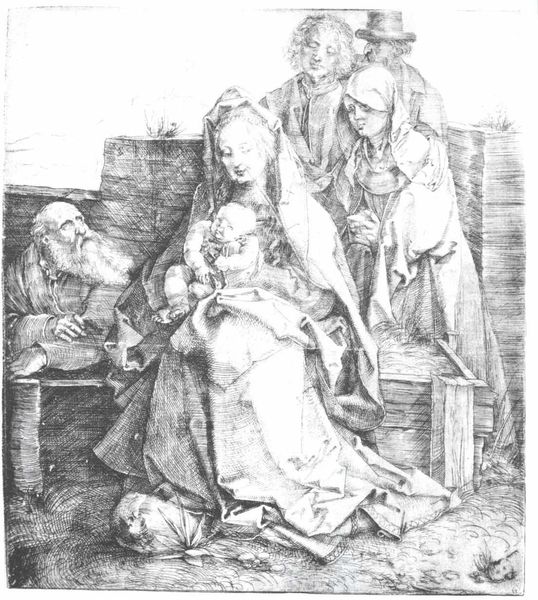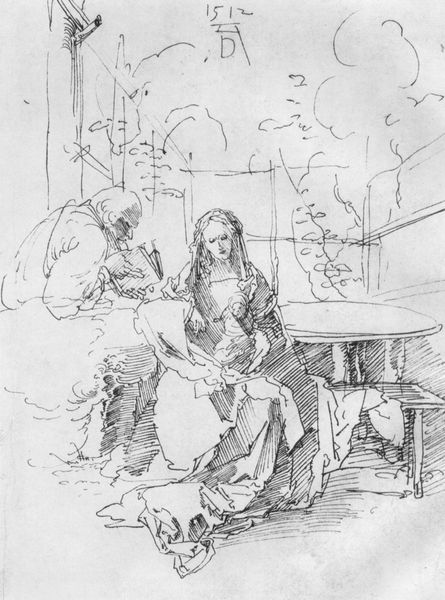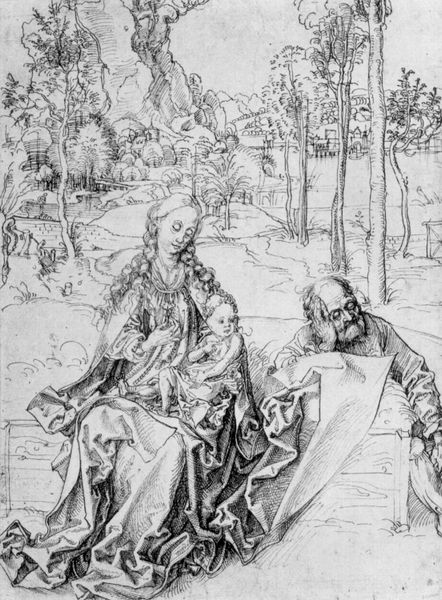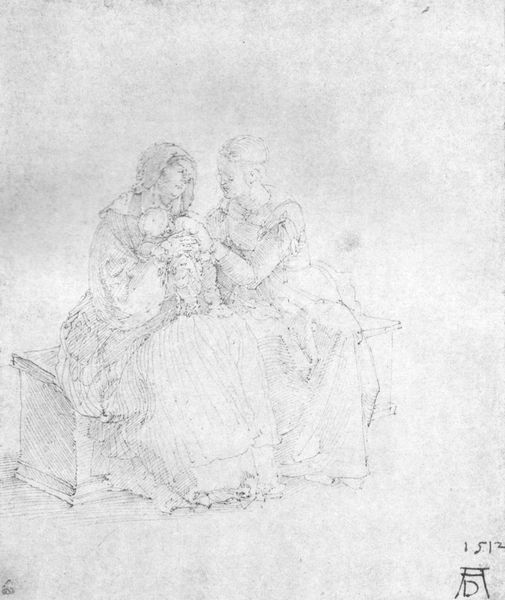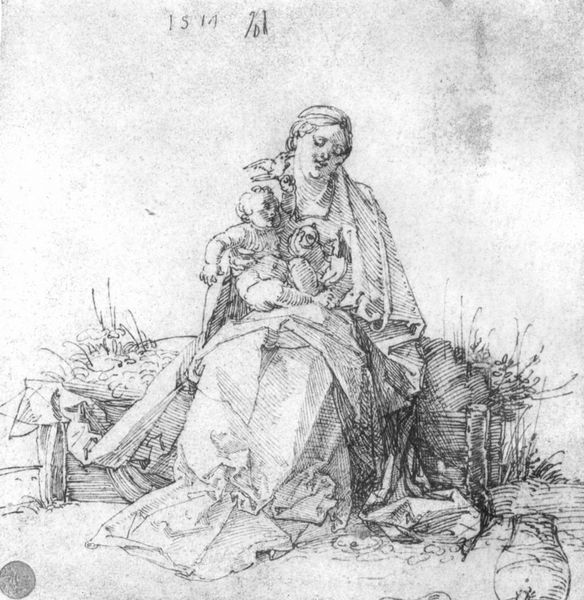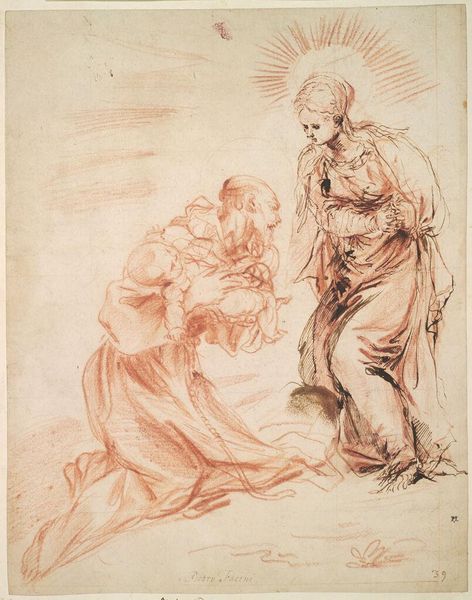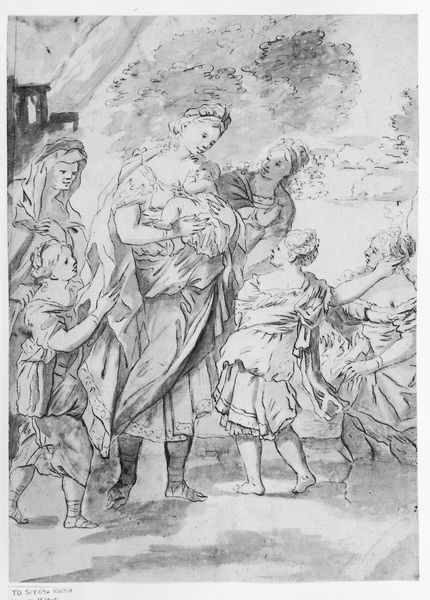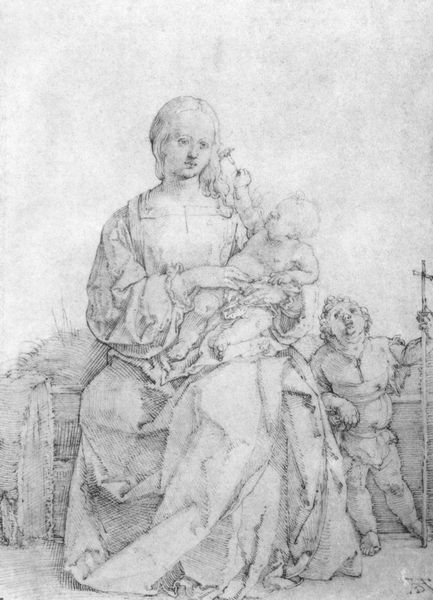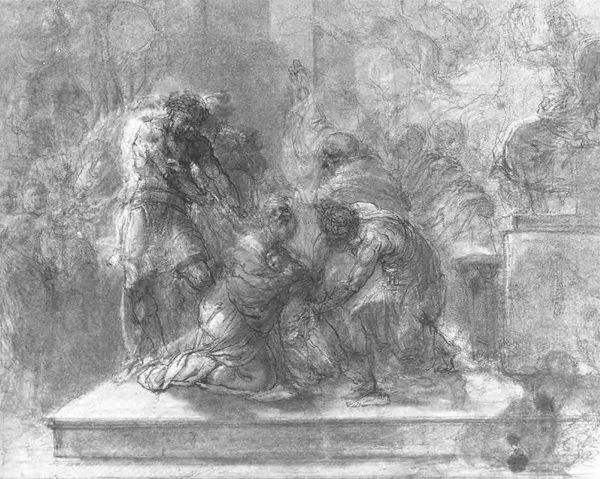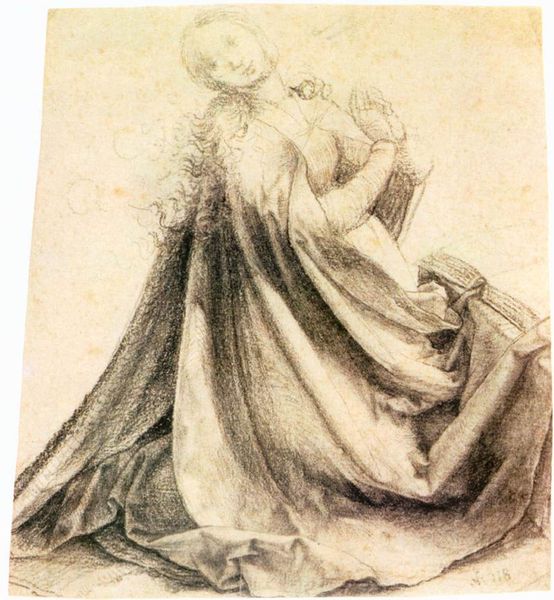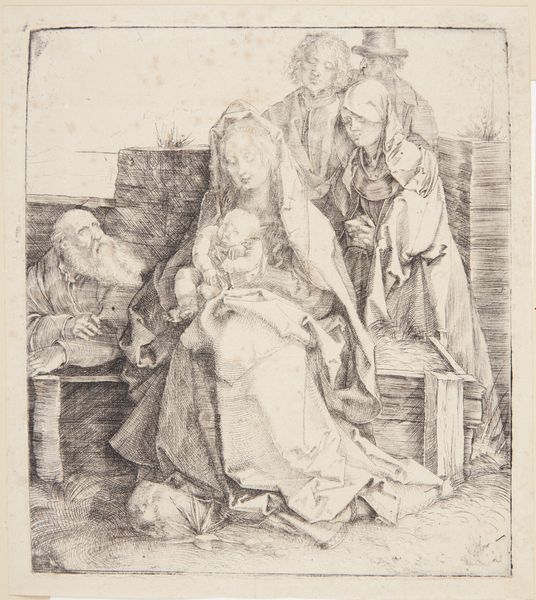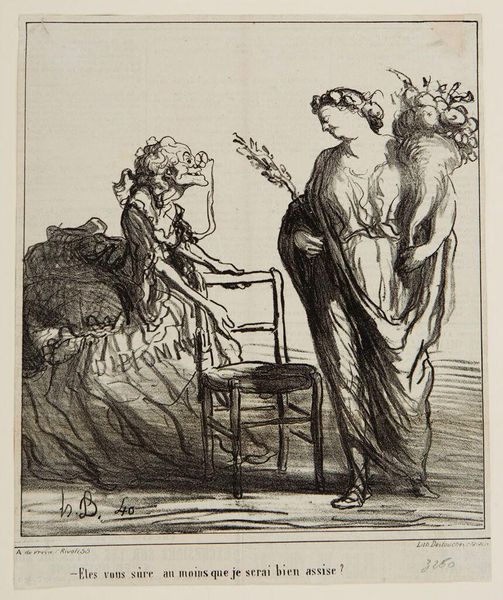
drawing, graphite
#
drawing
#
narrative-art
#
charcoal drawing
#
figuration
#
11_renaissance
#
graphite
#
northern-renaissance
#
charcoal
#
graphite
Copyright: Public domain
Curator: Albrecht Dürer’s drawing, “Rest on the Flight to Egypt,” executed around 1494 in graphite and charcoal, presents an intimate moment amid a fraught journey. The composition immediately suggests a visual tension, doesn't it? The sharp angles and the sheer amount of texture seem to overwhelm the ostensibly calm subject matter. Editor: Yes, the contrast is striking. Look how Dürer uses tight hatching and dramatic contrasts, which imbue the figures and fabric with weight and volume. The composition almost strains to contain them, don't you think? Curator: The narrative is one steeped in religious and cultural symbolism: The Holy Family flees to Egypt to escape Herod's decree. The imagery invites viewers to consider themes of exile, protection, and divine intervention during times of peril. Consider Mary's pose – she shelters her child not just physically but perhaps from an impending, unseen threat, consistent with similar iconic representations. Editor: I'm especially intrigued by the way the garments engulf the figures, conveying this immense density through line alone. Note how they also seem to constrain Mary and the infant Christ, drawing us to consider an abstract geometry where those shapes interact as design elements on the plane of the page. Curator: I'm compelled by how Joseph is rendered—a weary protector, almost detached, underscoring the personal and collective burdens of displacement. We see his internal exhaustion externalized through posture. And in those symbols, we grasp something beyond the biblical tale itself, some universal truths about refuge and hardship. Editor: Indeed, the dramatic folds act as signifiers, visually anchoring the moment and perhaps reflecting his psychological space. What might first appear spontaneous reveals the artist's calculated orchestration. The image vibrates with layers of graphic incidents: a symphony of skillfully rendered lines that are neither accidental nor truly "realistic". Curator: To truly appreciate this image, it is critical to examine how this drawing fits within the historical moment, and how cultural memories might affect its reception through time. Editor: Absolutely. And to unpack these interwoven formal qualities lets us see both Dürer’s technical brilliance, and how he was already challenging, subverting, and exceeding traditional Northern Renaissance models. The drawing is, as you point out, a fascinating intersection of method and cultural meanings.
Comments
No comments
Be the first to comment and join the conversation on the ultimate creative platform.
